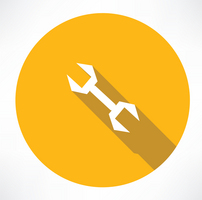 On July 29th, Microsoft held true to its claim and the free Windows 10 upgrade was no longer available. Now, anyone wishing to upgrade to Windows 10 will only be able to do so by purchasing a license. Does that mean you should hold out until your Windows 7 or 8 operating system is no longer supported? Not necessarily.
On July 29th, Microsoft held true to its claim and the free Windows 10 upgrade was no longer available. Now, anyone wishing to upgrade to Windows 10 will only be able to do so by purchasing a license. Does that mean you should hold out until your Windows 7 or 8 operating system is no longer supported? Not necessarily.
One of the biggest reasons that I hear for not upgrading is that some people are afraid that their computers won’t run the latest operating system from Microsoft. In reality, the minimum hardware requirements for Windows 10 really aren’t that much greater than the Windows 7 requirements: a 1 gigahertz or faster processor, 2 gigabytes of RAM (for the 64-bit version), 16 gigabytes of hard disk space, and a graphics card that supports Microsoft DirectX 9 or higher. Essentially, any computer manufactured in the last five or six years should have no issue meeting these requirements.
The next biggest reason is the fear of change. Some people just like Windows 7 and I don’t blame them. In fact, I liked it much better than Windows 8 or 8.1. So did a lot of other people. Microsoft took this criticism to heart, and with the release of Windows 10, they brought back many features of 7. This includes the option to boot to a desktop and the re-addition of the start menu. Also, after upgrading to Windows 10, a user will have thirty days to revert back to their previous Windows version if they want to switch back. This alone should eliminate any fear of not liking Windows 10 and being “stuck” with it.
For those of you who did upgrade before July 29th, you have reserved a digital entitlement for your computer. Even if you decide not to stay with Windows 10 and revert back, you will always have that entitlement so that you can upgrade again in the future at no cost (but only for the computer that you performed the upgrade on in the first place).
If you didn’t upgrade, don’t worry too much. You still have some time before your operating system isn’t usable. Windows 7 had mainstream support end in January 2015, but it isn’t until January 2020 that it will be considered End of Life (like Windows XP back in 2014). If you have and prefer Windows 8, mainstream support lasts until January 2018 and will be considered End of Life in January 2023.
(Image Source: iCLIPART)

